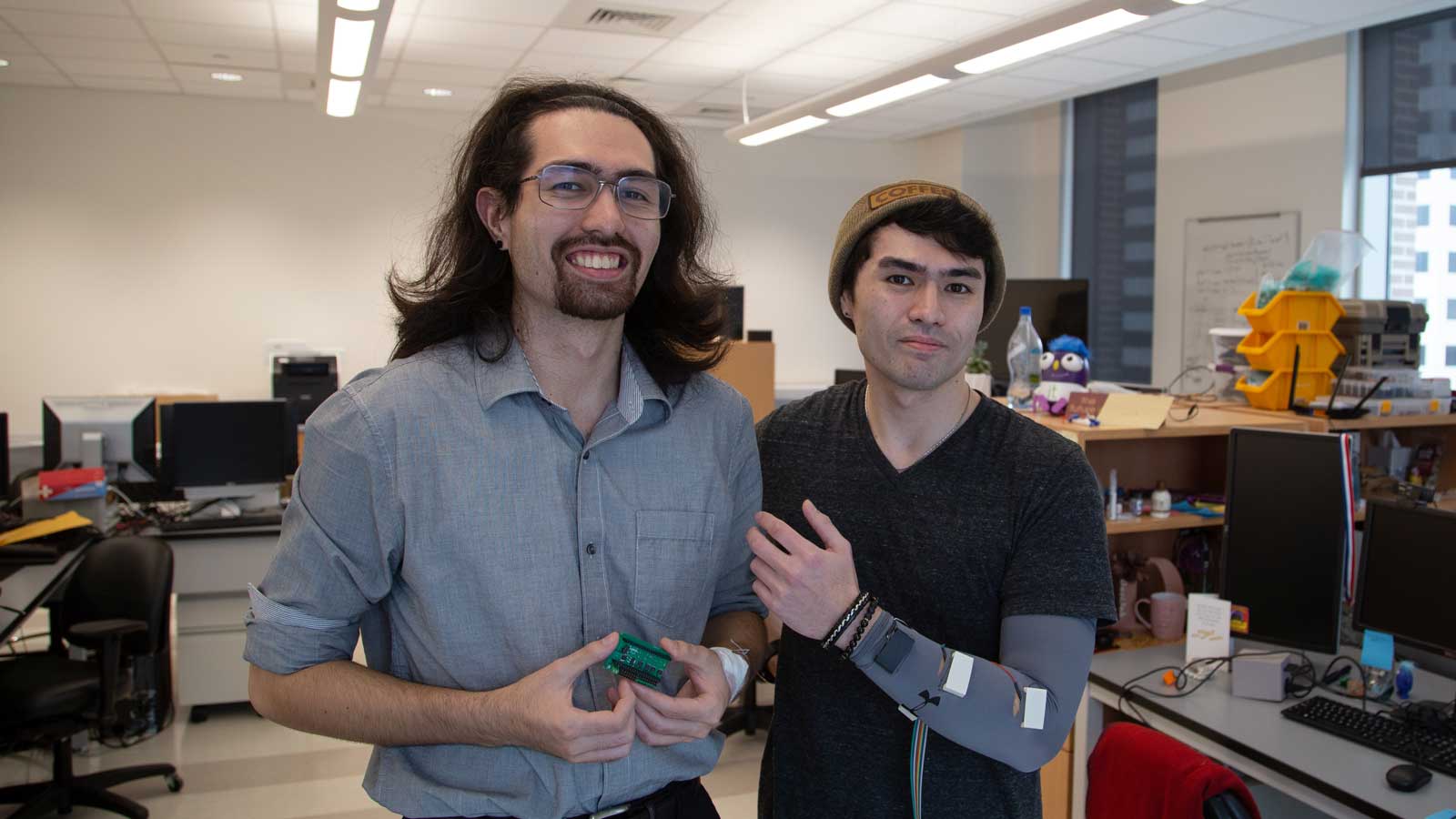The Zook brothers joke about their distribution of labor: Zane is the hardware guy and Gabe handles software.
“That oversimplifies things but there’s something to it. I’ve always been more interested in gizmos, mechanical things like a clockwork watch,” said Zane, a fourth-year doctoral student in mechanical engineering (MECH) at Rice.
“I like to plan out a series of actions that can be carried out by a mechanical device. Both of us played with Lego robots as kids,” said Gabe, a sophomore who recently switched his major from MECH to electrical and computer engineering (ECE).
Both work in the Mechatronics and Haptic Interfaces (MAHI) Lab of Marcia O’Malley, the Thomas Michael Panos Family Professor of MECH and associate dean for research and innovation. Hardware and software come together in the lab’s focus on human-robot interactions.
Some 30 years ago, the brothers’ American father went to Japan to teach English. There he married the brothers’ Japanese mother, one of his students. Zane was born in Tokyo and Gabe, now 20, followed in Bellevue, Wash., where the family resettled.
Zane, 27, earned his B.S. in MECH in 2018 from Stanford and his M.S. in MECH from Rice in 2020. From early childhood, he felt the attraction of robotics. In grade school he enjoyed “Take-It-Apart Days,” when kids were encouraged to disassemble various electronic devices. “I always liked tech stuff,” Zane said. “In third grade I got into Lego robot competitions, thanks to my Dad. I built my first computer at age 10.”
At Stanford, Zane worked in the lab of Allison Okamura, professor of MECH and director of the CHARM (Collaborative Haptics and Robotics in Medicine) Lab. Okamura knows O’Malley and recommended that Zane attend Rice for grad school and work in her lab.
Zane’s overarching research interest is wearable haptic devices. He has three principal projects underway simultaneously. In the first, he and Dr. O’Malley are studying how the orientation of spatial focus affects the perception of simple tactile cues. In addition to MECH, Zane draws on computer science, electrical engineering and psychology.
In a paper titled “A Textile-Based Approach to Wearable Haptic Devices,” Zane collaborated with researchers in the Preston Innovation Lab at Rice, headed by Daniel Preston, assistant professor of MECH. It has been accepted for publication and will be presented at the International Conference on Soft Robotics in Edinburgh, Scotland, in April.
“The sense of touch is a useful form of communication,” Zane said. “It can broaden the often-crowded visual and auditory pathways. But haptic devices haven’t yet been fully integrated into garments and other soft wearables in a way that has the comfort of everyday clothing. That’s a barrier to widespread adoption.”
In a third project, “Snaptics: Low-Cost Open-Source Hardware for Wearable Multi-Sensory Haptics,” Zane is working with O’Malley, his brother Gabe and Ozioma Ozor-Ilo, a senior in MECH. Snaptics proposes a low-cost, open-source, haptics platform designed for rapid prototyping of wearable multisensory haptic devices.
“We want to make multi-sensory wearable haptics inexpensive, simple to build, and mobile,” said Zane, who expects to earn his Ph.D. in 2023.
“After that, I probably will look for a job in industry. I have broad skills, which should help me find a good job,” Zane said.
Gabe designed the printed circuit boards used in the Snaptics project, and designed the interface between the haptic devices and the virtual reality environment. Though still interested in robotics, he hopes to also work in the field of renewable energy while majoring in ECE.

